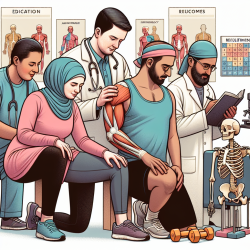As a Special Education Director, ensuring the well-being of both students and their families is paramount. Recent research published in the International Journal of Environmental Research and Public Health sheds light on the quality of life (QoL) among mothers of high-functioning autism spectrum disorder (HFASD) adolescents. This study provides valuable insights that can help practitioners improve their skills and better support these families.
Key Findings and Their Implications
The study identified four primary domains affecting the QoL of mothers of HFASD adolescents:
- Physical and Emotional Well-Being: Mothers reported maintaining good physical health through regular exercise and receiving support from their spouses and children. However, they expressed significant anxiety about their children's future and behavior, particularly as they reached puberty.
- Interpersonal Relationships: The quality of social support from friends and family was crucial. Mothers valued the acceptance and understanding from their close social circles, which helped them feel more comfortable engaging in society.
- Material Well-Being: Financial stability allowed mothers to provide necessary accommodations and access to services for their children. This included investing in therapies and educational programs, regardless of the cost.
- Environmental Well-Being: Safety concerns and stigma were significant issues. Mothers often restricted their children's outdoor activities to ensure their safety and faced social stigma from neighbors and educational institutions.
Practical Applications for Practitioners
Based on these findings, practitioners can take several steps to improve their support for mothers of HFASD adolescents:
- Enhance Emotional Support: Provide counseling and support groups to help mothers manage their anxiety and stress. Encourage regular physical activities as a means of maintaining emotional well-being.
- Strengthen Social Networks: Facilitate connections between families facing similar challenges. Organize community events and workshops to foster a supportive environment.
- Ensure Access to Resources: Advocate for better funding and accessibility to therapies and educational programs. Help families navigate available resources and financial assistance options.
- Address Safety and Stigma: Educate the community and schools about HFASD to reduce stigma. Develop safety plans and strategies to ensure the well-being of these adolescents.
Encouraging Further Research
While this study provides valuable insights, further research is needed to explore the QoL of fathers and other family members of HFASD adolescents. Understanding the broader family dynamics can lead to more comprehensive support strategies.
To read the original research paper, please follow this link: Quality of Life among Mothers of High Functioning Autism Spectrum Disorder (HFASD) Adolescents.










